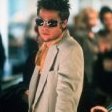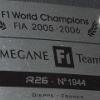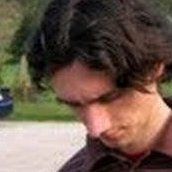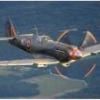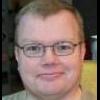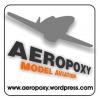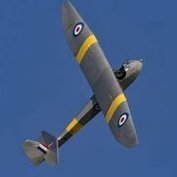-
Posts
1,636 -
Joined
-
Last visited
Profile Information
-
Gender
Male
-
Location
Finland
Recent Profile Visitors
3,434 profile views
Antti_K's Achievements

Very Obsessed Member (5/9)
2.5k
Reputation
-
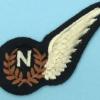
Who knows more about the internal camouflage of J7W1 Shinden?
Antti_K replied to BOBO's topic in Aircraft WWII
Hello guys, some close up photos taken at NASM (after the Shinden was put on display) suggest that the canard undersides may be unpainted. Check these photos: https://447bg.org/ww2-planes/ww2-japan/j7w1-shinden/ For the cockpit: have you seen Robert Mikeshi's "report" on Shinden colours? You can find the information in the "Aviation of Japan" blog. It seems that the original interior colour would have been an olive green. Something like in that photo the OP posted. Cheers, Antti -
Hello TeeELL, you are right: the flaps were raised and the air brakes closed before engine shut down (at least on FAW.9 and FAW.9R). Otherwise there were troubles ahead and some serious work with the air brakes and the hydraulic system was required. The flaps drooped slightly (10 inches perhaps) after shut down. As you mentioned in your earlier post both ailerons turned slightly up when pilot applied the control lock before leaving his cockpit. Cheers, Antti
- 69 replies
-
- 2
-

-

-
- Airfix 1:72 Javelin
- 1:72 Javelin FAW9
-
(and 1 more)
Tagged with:
-
Lovely work TeeELL! I really admire those 3D parts. Are you going to place the flaps fully down? Cheers, Antti
- 69 replies
-
- Airfix 1:72 Javelin
- 1:72 Javelin FAW9
-
(and 1 more)
Tagged with:
-
Very interesting photo James, thank you for sharing it! It looks possible that this was taken at Tengah. Note the small rectangular on "Boson" tank; No 64 Squadron marked their tanks just like that. A yellow rectangular with black squadron number, a slash and the individual tank number. These stickers were left in place when the planes were handed to sixty squadron. The camouflage looks fresh (it took roughly a year for a gloss camouflage to turn completely matt) and a lighter colour (yellow?) is used for some stencils. Yellow was used for stencils only during the final years (1967 - 1968) in Singapore. The starter system was mounted on fuselage frame 11 (cartridge system) and between frames 11 and 12 (AVPIN system). The two exhaust pipes on the bottom are located just aft of frame 11. Here's a "general view": Two of my sixty squadron Javelin FAW.9Rs compared: Hopefully you can see the pictures as my Villagephoto account seems to have a will of its own. The black triangle looks poorly positioned if the idea was to hide any possible stains aft of those outlets. The location of the triangle wasn't an exact science as on some Javelins it is partly hidden below the "Boson" tank. Note also the "Hell Hole" door positioned on the ladder and the yellow squadron marking on the "boson" tank (not included in Airfix decals): Cheers, Antti
-
I can't say. IIRC the streamlined outlets just below the colour demarcation line were (at least) for the missile cooling system heat exchangers (that said without my books and notes at hand). It certainly was a hazardous job! First you note those tall fire extinguisher bottles close by when the engines were started up. Usually the "Hell Hole" door was left open until both engines were running smoothly. Fire could broke out easily and it was deemed wise to keep that hatch open until the plane was ready to taxi. The missile seeker heads were cooled with ammonia and the bottles needed to be filled between flights. One service procedure (jet pipe heat thermo couple check) called for a crew member to enter a small hatch next to the fin head first while his co-worker held him by the legs. It would have been nasty to fall inside the cramped rear fuselage... An anecdote says that a Javelin mechanic needed "three meter long arms with 18 joints". Cheers, Antti
-
I studied the faded colours of a Finnish Folland Gnat fighter. Humbrol 108 was a very close match to Dark Green. The surface is still satin. I would create faded Dark Sea Grey by adding white to Humbrol 27 or by painting everything with Hu 27 and then add powder of a light blueish grey crayon with a cotton swab. Cheers, Antti
-
Hello all, unfortunately this triangle marking remains a mystery. I've even talked to a couple of old Javelin guys (ground crew members) but they couldn't answer the question about this black triangle. The marking is painted partly or completely on "General Services Accumulator" bay door. A clear variation of the exact position can be seen on photos. The marking can be seen at least on the following Javelins: XA761, FAW.4, January 1961 XH715, FAW.7 XH778, FAW.7 XJ125, FAW.8 XH844, FAW.9 XH881, FAW.9 XH890, FAW.9, two different photos XH961, FAW.9R Like James says, the IPN starter fill port is located on top of the Port air intake and aft of navigator's canopy. The starter system exhausts are located between the "Boson" tanks, well aft of the "Hell Hole" door (all visible in the photo Dennis posted). Another mystery detail is stencil "FI.5 AERIAL" (on wing tips and forward fuselage side). Cheers, Antti
-
I think JWM has a point in here. Look at the insignias on plane number 5. On the Starboard wing the checkerboard appears to be in line with the aileron inner edge. On the Port wing the checkerboard is located close to the wing tip. So the checkerboards aren't placed symmetrically. Is it possible that some retouching was made onto this photo; the national insignias were added in a photo laboratory. Cheers, Antti
-
Hello guys, I would follow the information Kari provided as he has been studying original air force documents. The colour photo Troy posted shows even the outline of the wartime national insignia. IIRC there are some photos showing the over painted "Stamm Kennzeichen". It looked like a grey, slightly darker than RLM 76, was used. It was probably either Ilmari Juutilainen or Hans Wind (both highly decorated Finnish fighter pilots) who told me, that those washable ferry flight registration markings (Stamm Kennzeichen) couldn't be removed and needed to paint over. Cheers, Antti
-
Hello TBC, yes, Airfix produced "flat sided" Boson tanks. There was a gap between the fuselage and the tank that was filled with a round rubber seal. The gap didn't run all the way from the tip to the rear. Here's one possible way to fix the kit: Cheers, Antti
-

Hawker Hurricanes around the world
Antti_K replied to ModelingEdmontonian's topic in Work in Progress - Aircraft
Hello AaCee, I agree that aluminium was used on planes like Brewster, SB-2 and DB -bomber. They were all initially painted with aluminium overall. Olive green and black was applied on top of that. You can see canopy frames left in aluminium on many Brewsters. My memory says (and it could go wrong) that Blenheims and Fiats had light grey undersides. God Jul AaCee🙂 Antti- 634 replies
-
- 4
-

-
- 1/72
- Hawker Hurricane
-
(and 1 more)
Tagged with:
-

Hawker Hurricanes around the world
Antti_K replied to ModelingEdmontonian's topic in Work in Progress - Aircraft
Excellent point Troy and V-P, I would use light grey on my model. As V-P said light blue was first used in 1942. I haven't heard that aluminium was applied together with olive green and black. Hyvää Joulua V-P and Troy, Merry Christmas everyone! Antti- 634 replies
-
- 5
-

-

-
- 1/72
- Hawker Hurricane
-
(and 1 more)
Tagged with:
-

Hawker Hurricanes around the world
Antti_K replied to ModelingEdmontonian's topic in Work in Progress - Aircraft
Finnish Hurricanes were usually painted with dark green, black and light blue when they received the "Warpaint" (Sotamaalaus). Finnish colours: Dark green is NCS S7010-G70Y (Lifecolor set gives an exact match) Black, use flat black and add few drops of white Light blue is NCS S2030-B10G (observed on HC-452: under the fuselage and on the radiator sides). Also NCS S2030-B Ultramarine blue (swastika) NCS S6030-R80B Cockpit is painted with aluminium and Grey Green (NCS S5020-G30Y). Landing gear bays, legs and door interiors originally painted with aluminium and thinly over sprayed with light blue. Propeller blades Night with Yellow tips. Hope this helps, Cheers, Antti- 634 replies
-
- 6
-

-

-
- 1/72
- Hawker Hurricane
-
(and 1 more)
Tagged with:
-
Excellent photo Troy! Thank you for sharing it. It shows another detail that isn't very accurate in the Hasegawa 1/48 scale kit: The gun camera window sits slightly higher on the wing leading edge than the landing light. Should have asked you earlier😉 Cheers, Antti
-
Wlad, your photo clearly shows it: the pylons are perpendicular to the ground. Look at the innermost pylons on both wings. F4U-7s were a batch of some 90 planes that were built in rather short time. It seems unlikely that some of those planes could have had different type pylons. Cheers, Antti


